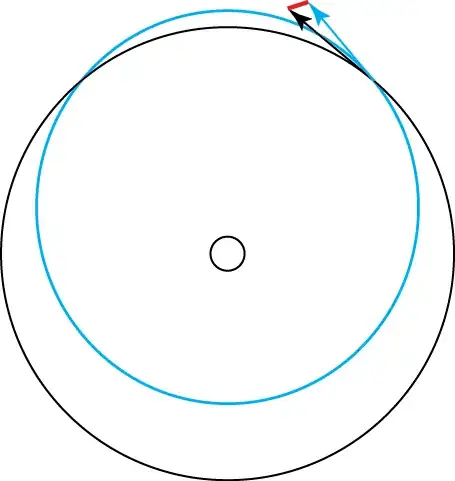I am attempting to create fictional, stable P-Type binary system, featuring a gas giant in a stable orbit, with a habitable Earth-like moon. “Is a Jupiter-sized planet plausible in a habitable zone?” has some interesting and useful information about gas giants in the circumstellar habitable zone of a system, and “Can a gas giant have its own habitable zone?” has some good information about the potential of a gas giant having its own habitable zone, separate from the circumstellar habitable zone.
Within the constraints of this fictional system, I have a habitable zone spanning between 1.976 AU and 2.808 AU, and the following considerations.
Gas giant would need a stable magnetosphere. Jupiter and Saturn may be useful examples.
The moon's mass must be great enough to sustain an atmosphere. In this instance, a nitrogen/oxygen atmosphere. It is estimated that a moon with a Mars-like density, would need at least 7% of Earth's mass in order to support such an atmosphere for several billion years.
Both gas giant and the habitable moon must maintain a stable orbit. Simulations would suggest that to maintain a stable orbit to a gas giant, or a brown dwarf that orbits 1 AU from a sun-like star, would require a moon orbital period of less than 45–60 days.
The moon itself must be capable of generating its own magnetosphere in order to deflect stellar wind and the gas giants' naturally generated radiation belts.
There is a high likelihood that the moon would be tidally locked with its parent world. Monoj Joshi, Robert Haberle, and their colleagues suggest that the effect of tidal heating could support conditions amenable to habitability. Additionally, tidal effects may allow for plate tectonics, causing volcanic activity and a regulation of the moon's surface temperature. The potential, resulting geodynamo effect would allow for a strong magnetic field.
Balance: The moon should be large enough to support tectonic activity, dense enough to support a strong protective magnetosphere, close enough to the gas giant to maintain a stable orbit, and be far enough away that its own magnetosphere may better protect from sputtering caused by its parent worlds' radiation belts.
It is suggested that the larger and denser a terrestrial, water-rich world, the further out its habitable zone extends.
The moon does not necessarily need to be an earth analog, and may simply be demonstrated as habitable to human life.
The gas giant does not necessarily need to be within the habitable zone and may cradle the outer limits of the circumstellar habitable zone, or be further out provided it can be demonstrated that the orbiting moon could feasibly support human life unassisted by technology. i.e. Robin Crusoe could become stranded on the moon, and survive.
Ready for the fun part?
If the terrestrial moon must be of a certain size to display tectonic activity throughout its life, as demonstrated in the difference between Earth and Venus (Venus being about 85% the size of Earth), then an Earth-sized moon (or larger) would be preferable.
To the best of my understanding this paper suggests that a world of this size, wouldn't be formed in the accretion disk of a gas giant (but I may have misunderstood), however, after the migration of a gas giant, the mixing to inner system and outer system debris has shown in simulations, to allow for the formation of water-rich terrestrial worlds. The paper does at least suggest that larger bodies may be captured, and pulled into orbit by a gas giant.
So, let's say our gas giant migrated from the frostline of the system, to somewhere near the circumstellar habitable zone, and afterword, as the orbit began to stabilize, a new terrestrial world began to take shape. Its orbit took it near enough to the gas giant to be pulled into orbit of the planet, and over time, their mutual orbits stabilized.
How can I figure out how large the gas giant must be in order to capture this moon, and establish a stable orbit?
Tidal locking of the moon may be an issue, but also may be compensated by its orbit around the gas giant. How can I determine how far the moon would need to orbit the gas giant, to not be tidally locked? This topic has some interesting points.
Here is my hypothetical.
The gas giant cradles the outer limits of the circumstellar habitable zone in such a way that the captured moon passes through the circumstellar habitable zone during each rotation. The size of the moon is large enough for tectonic activity, which may in turn, be aided by gravitational forces from its primary. The moon is also dense enough, with an iron/nickel core, to produce a strong magnetosphere, which if further aided by tectonic activity. Tidal forces are affected by the gravitational pull of the primary, throughout the moons orbit. Keeping the world warm enough to sustain liquid water, I don't think will be an issue, and would instead be a matter of striking a balance between orbital distance between the primary and the system's stars.
I feel like I am missing a few things. What are your thoughts on how I can work out a viable, habitable moon in this scenario?
Originally I asked this on Astronomy, and it was suggested that I ask here in Worldbuilding instead.

